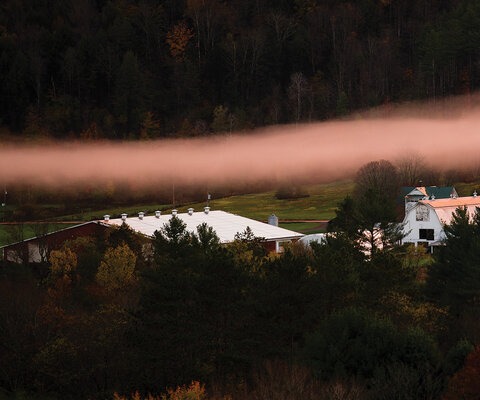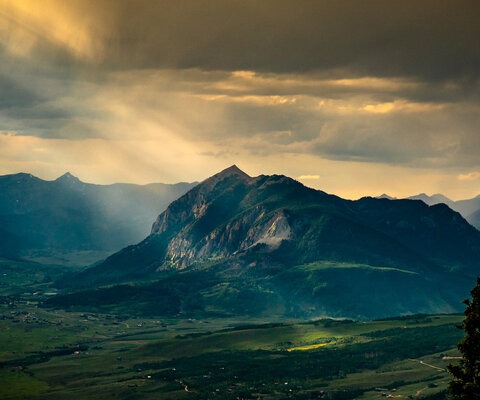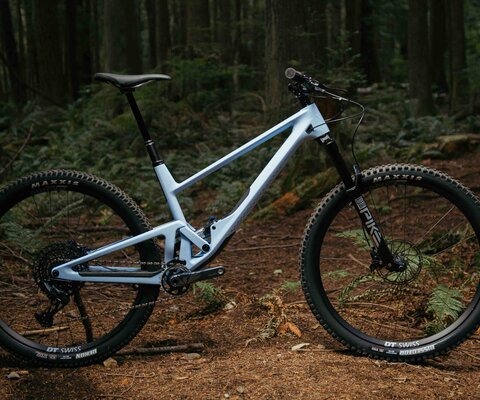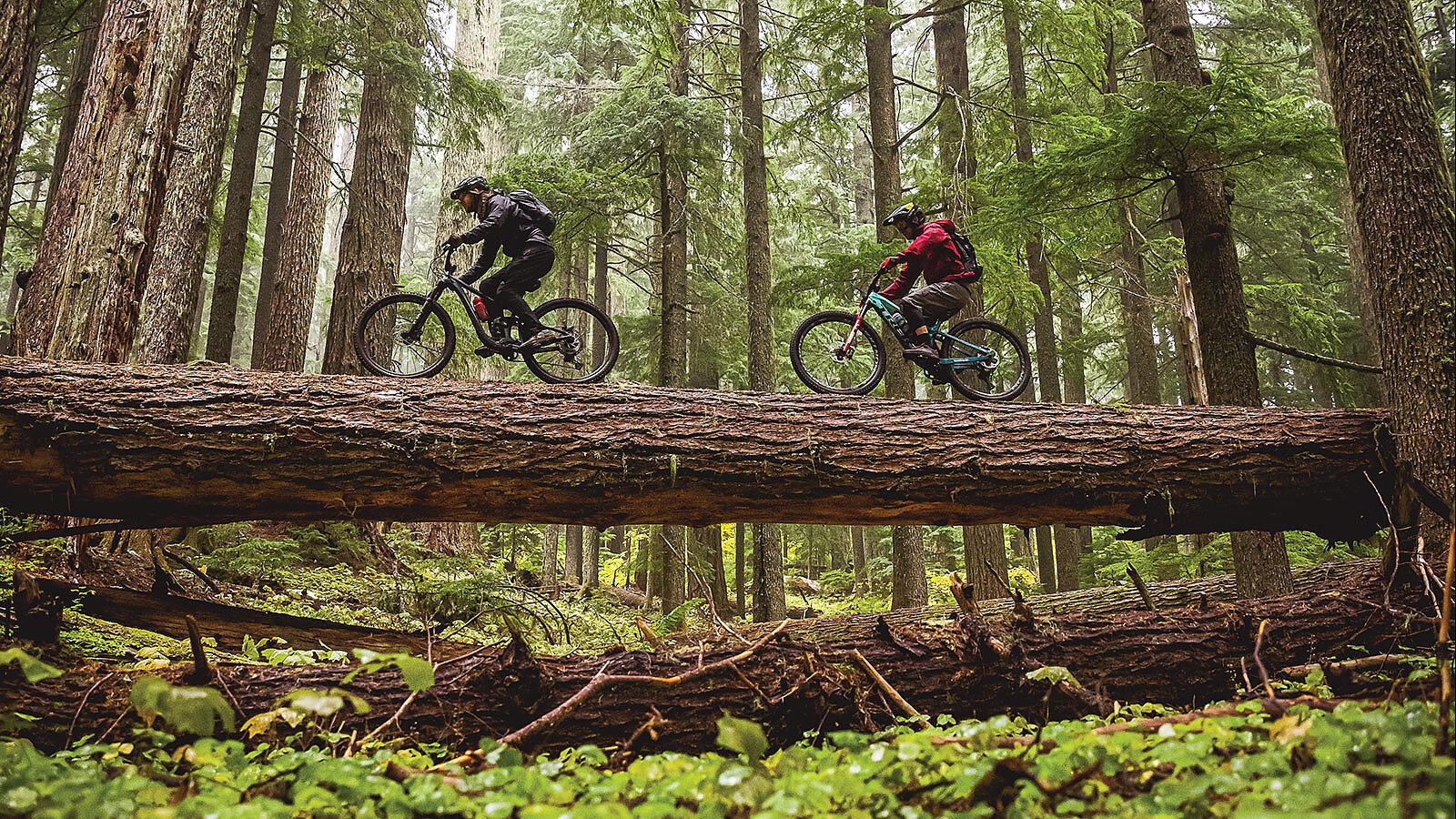
The Great Escape Oakridge's Enduring Backcountry Appeal
Words by Michelle Emmons McPharlin | Photos by Trevor Lyden
Among the places reputed to be the Pacific Northwest’s premier riding destinations, few have a stronger claim than Oakridge, Oregon.
Squarely centered within the contiguous Willamette National Forest, its location enables riders to easily trade the mundane trappings of civilization for the Cascadia paradise of pristine meadows, lush forests and rugged ridgeline vistas.
Aptly described in the City of Oakridge charter as the “Mountain biking capital of the Pacific Northwest,” the township serves as a hub for endless adventure, with each trail network acting as an access point, or spoke, in the overall wheel that is the surrounding Middle Fork Ranger District (MFRD).
“It depends on what you’re after, but Oakridge really does have it all,” Kevin Rowell, MFRD trails manager, says. “You can either ride to the trailhead via a combination of gravel road connections to singletrack or shuttle just about any style of riding your heart desires.”
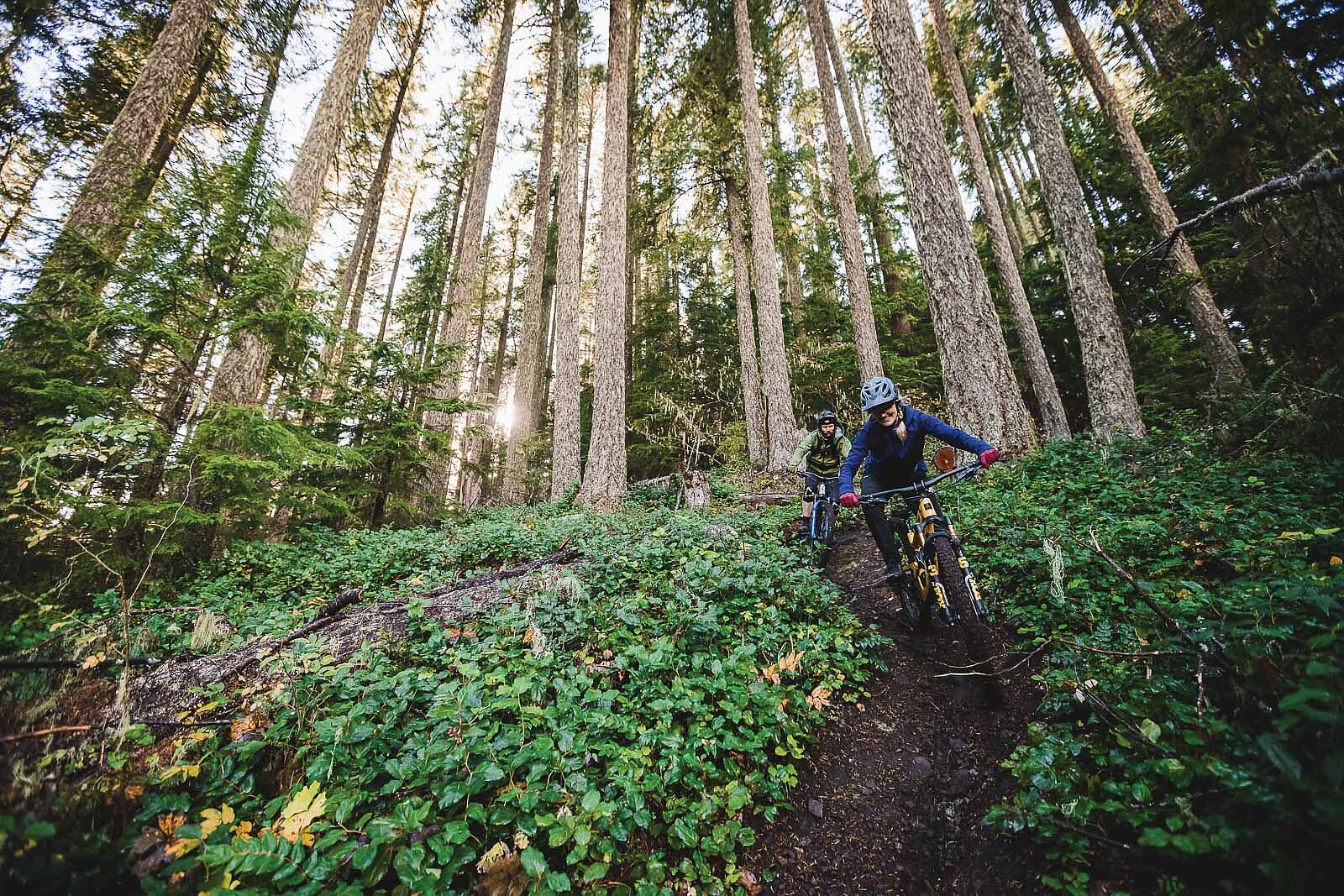

East of town, riders can enjoy a top-notch flow trail on Dead Mountain or an easy out-and-back along the Salmon Creek drainage, which boasts myriad water features, moss-covered trees and a whole feast of fungi. Add on Heckletooth Mountain and climb through stands of fire-scarred trees and manzanitas before conquering the jagged, technical switchbacks at the top of a long, screaming descent back to town. Extend your “peak to pub” adventure even farther east and test your true grit along the sub-alpine Bunchgrass Ridge, where breathtaking views will almost make you forget the stabbing pains in your legs.
In Greenwaters Park, younger families can enjoy a well-maintained wide gravel trail that runs parallel to the Middle Fork Willamette River. And just across the river, the Larison Ridge area offers the choice of two distinctly different trails: a ripping downhill or a gradual climbing odyssey of roots, rocks and creek crossings.
West of Oakridge proper lies the separate-yet-connected community of Westfir, where one can access the world-class Alpine Network, famous for its stunning wildflower displays and old-growth groves along the Tire Mountain and Jedi trail segments. Here also lies the North Fork Trail, which eventually extends to Box Canyon, exposing impressive views of the North Fork Willamette River.
Including designated National Recreation Trails, Middle Fork Willamette to the Jim Weaver Loop around the famed headwater of Waldo is home to more than 30 miles of riding through diverse ecosystems, with streamside views and bright-green carpets of oxalis and ferns. No matter which direction you head, Oakridge offers a vast array of two-wheeled adventures.
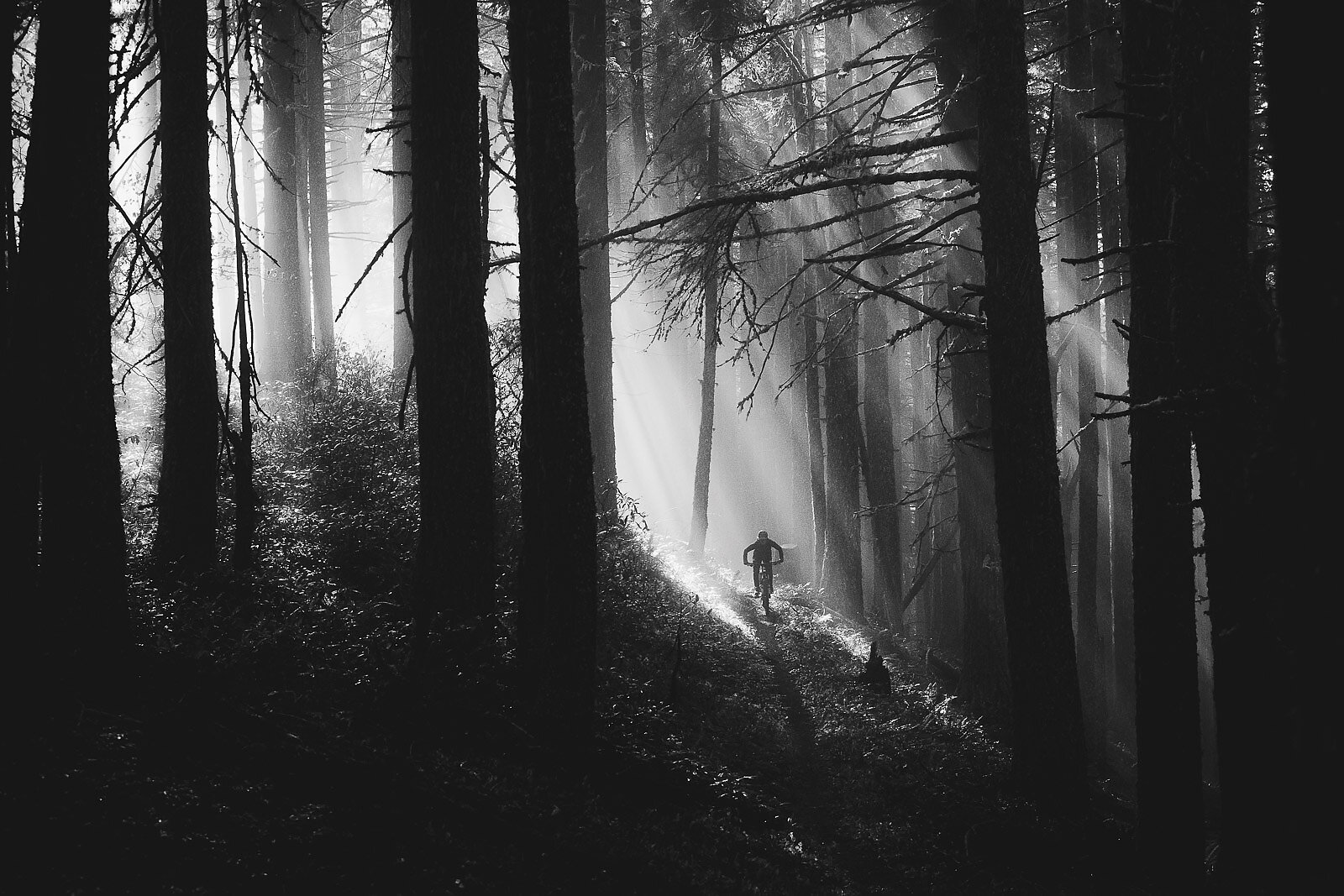

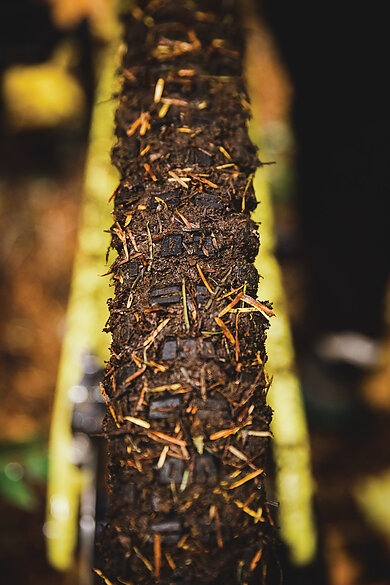
“There are 350 miles of trails here, with 80 percent open to mountain bike access,” Rowell says, adding that more are on the way.
A forthcoming, shovel-ready trail connection from the west side of the Alpine Network will connect the eye-gaping meadows and fast, smooth descent on Tire Mountain back to the main Alpine Trail. Eliminating the last 3 miles of the current gravel road climb, this addition of 4.5 miles of trail will complete an all-singletrack loop of 32 miles known as “A-T-C-A” (the Alpine-Tire Mountain-Clover-patch-Alpine route). Another 2.5-mile trail connecting Fuji Mountain to Bunchgrass Ridge will complete a long-sought contiguous trail corridor from the Waldo Lake Basin to Oakridge township.
With so many options and an ever-changing list of requests, the United States Forest Service has its hands full. The biggest challenge is keeping up with the list.
“We prioritize projects based on which trails are used most, collaborating with the extended user community to get work done together,” Rowell says. “The ability to leverage this phenomenal volunteer network helps us get a lot more done than we can do as an agency alone.”
Specifically, mountain bike groups have been actively engaged in trail stewardship since the mid-1980s. But back then, there was hardly the same demand for the experiences people expect today.
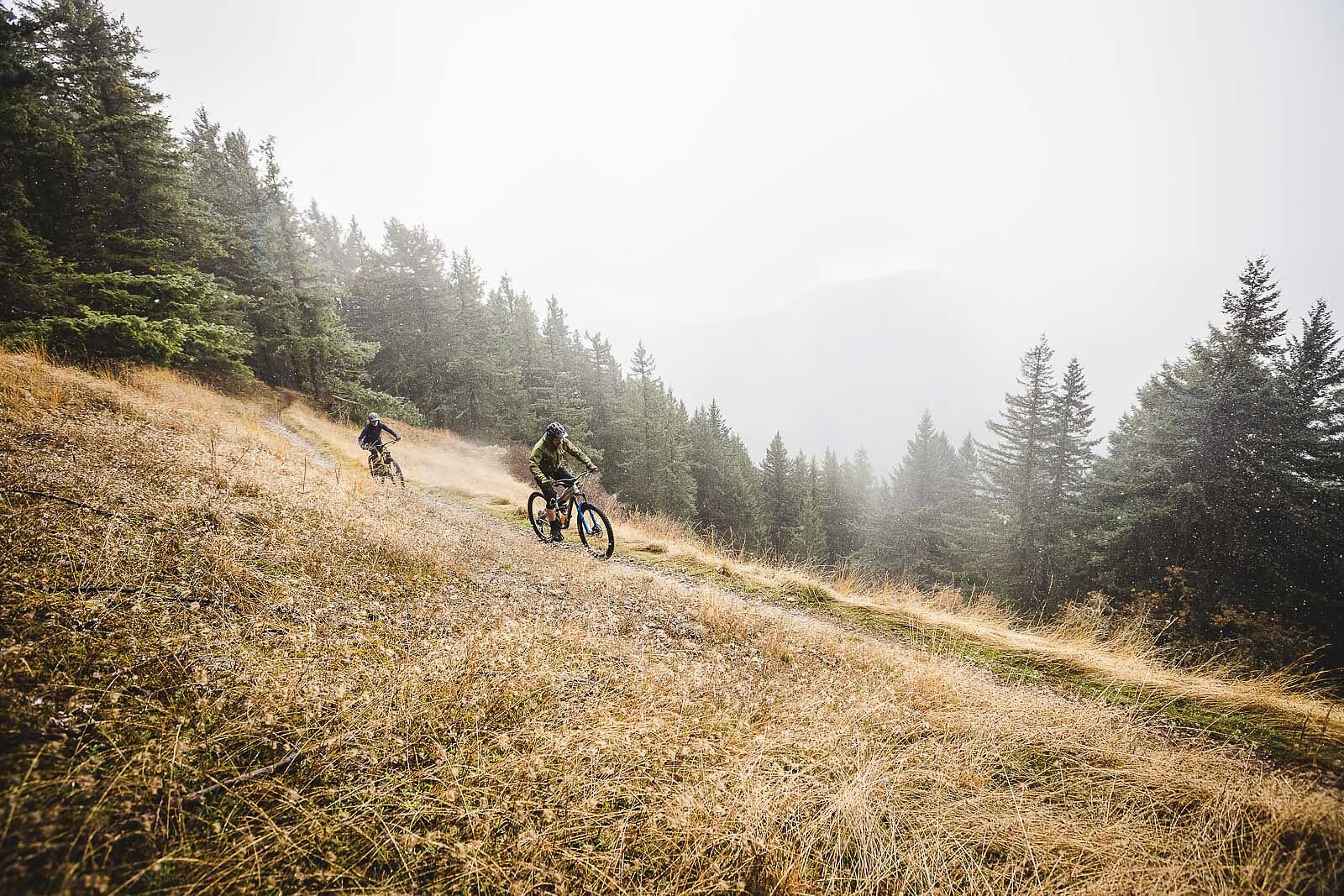
Recalling those “earlier days,” original resident Benjamin Beamer—founder of the Greater Oakridge Area Trail Stewards (GOATS)—describes mountain biking as being focused on one purpose: escape. And the idea of “escape” was to explore as many miles as possible. In those days, the sport was not divided into disciplines like downhill, freeride or cross-country. It was all just mountain biking.
“You pedaled up and you pedaled down,” Beamer explains. “There was no design concept around ‘flow.’ ‘Lines’ were eventually developed by riders over time, as more people began coming to the area and off-road riding evolved as a legitimate sport.”
Later, as the timber industry dried up, mountain biking emerged as an integral economic driver for the area. Endurance races such as the Fat 55 and the ironically named Cascade Cream Puff—a 100-mile sufferfest founded in 1995 by Scott Taylor—challenged riders to push their physical limits to new heights. Meanwhile, the Oakridge Fat Tire Festival trended toward shorter cross-country and downhill race formats, even featuring an early trials course built out of log decks and boulders.
In the early 2000s, a new generation of mountain bike enthusiasts flocked to Oakridge, indelibly shaping the future of the area’s trails. Beamer considers that period the “heyday of mountain biking in Oakridge,” and business was booming.
THE IDEA OF “ESCAPE” WAS TO EXPLORE AS MANY MILES AS POSSIBLE. IN THOSE DAYS, THE SPORT WAS NOT DIVIDED INTO DISCIPLINES LIKE DOWNHILL, FREERIDE OR CROSS-COUNTRY. IT WAS ALL JUST MOUNTAIN BIKING.
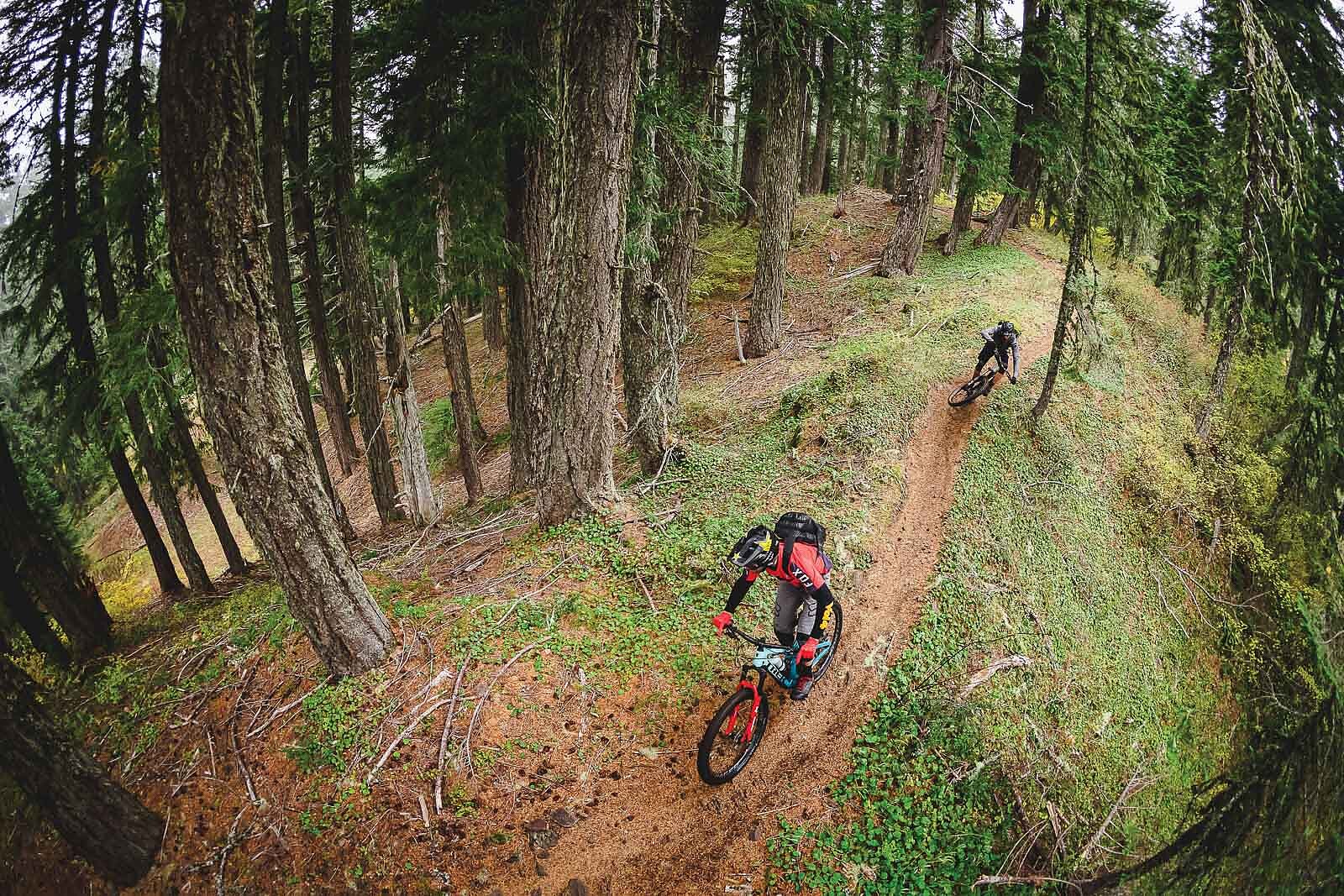
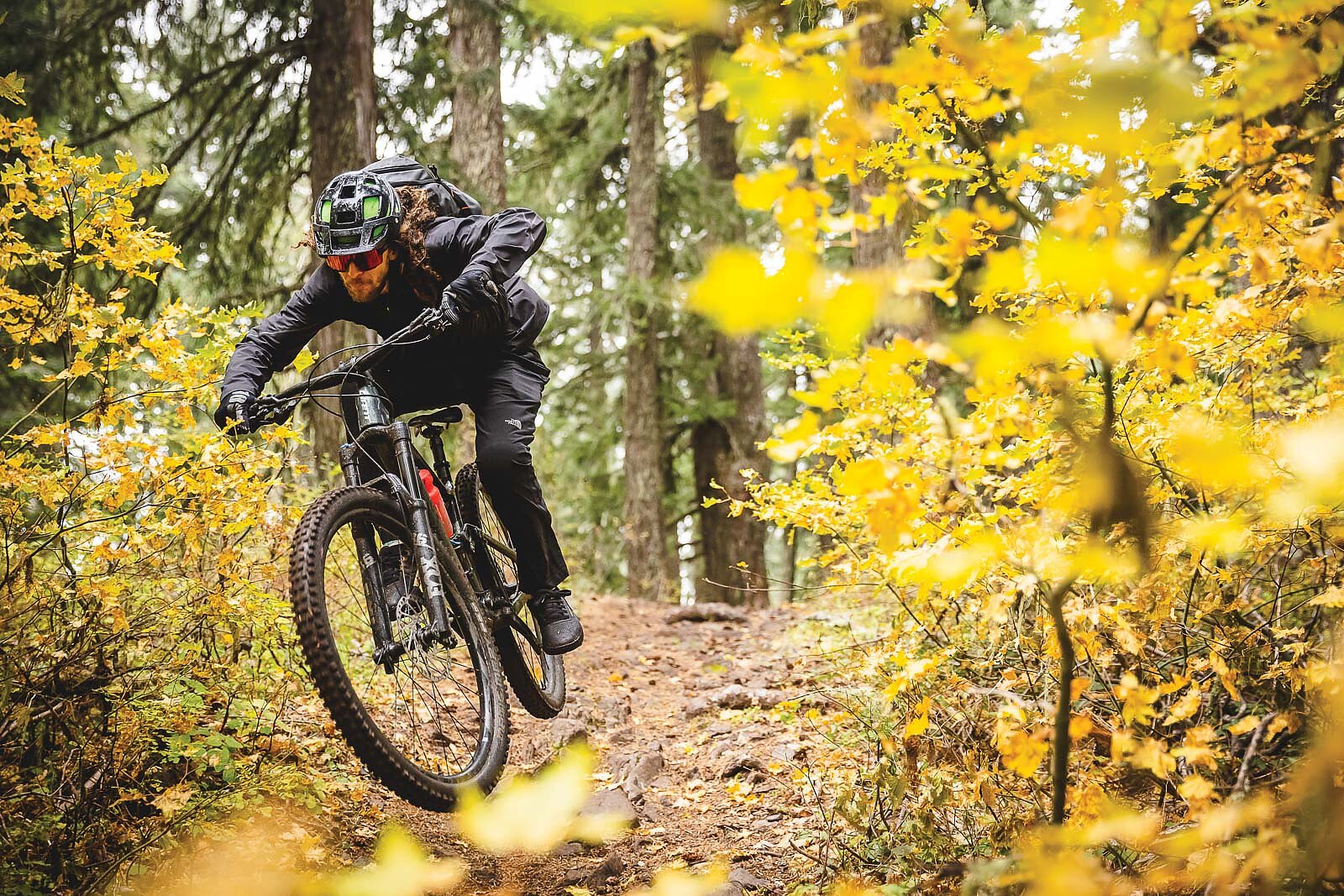
Willamette Mountain Mercantile, also known as the Oakridge Bike Shop, was established in 2004 and became a nexus for trail information, outdoor retail and bicycle repairs. Soon after, Randy and Paula Dreiling arrived on the scene and opened the town’s first shuttle company, Oregon Adventures. Together, they also launched Mountain Bike Oregon (MBO), a multi-day mountain bike festival that continues to this day. These developments diversified the ridership in Oakridge significantly, with increased access to trails via shuttling and the festival giving a huge boost to mountain bike tourism numbers. When the Brewer’s Union Pub opened in 2008, becoming a nexus for bike and beer aficionados alike, Oakridge was firmly cemented as a regional recreation hub.
This popularity did not come without cost. Mountain biking was experiencing sudden and rapid growth. Technology, riding styles and demand for certain experiences changed. And the trails themselves had to change in order to meet those demands and withstand increased use.
As early as 2006, efforts were already underway to address the need for sustainable trail design and rally community involvement to help build and maintain trails. The Oakridge-Westfir Community Trails Plan, completed in 2008, identified the need for more bike-friendly amenities and travel corridors to strengthen direct connections from town to forest. This eventually culminated in the construction of the Dead Mountain flow trail segment above the existing Flat Creek Trail, which helped to disperse user traffic from the most popular trails outside of the rural-urban interface.
On the heels of this planning process, in 2009, the GOATS group was formed. Tasked with developing a new base of volunteers to address growing trail-maintenance concerns, GOATS eliminated barriers to participation by providing coordination, tools, protective equipment and expertise. Collaboration with other trail groups soon broadened volunteer resources and fostered a new generation of Oakridge-area mountain bikers who viewed it as their responsibility to help build and maintain trails.
THE DEMAND FOR SHORTER, FASTER AND MORE TECHNICAL TERRAIN BEGAN TO RISE ALONG WITH THE NUMBER OF GRAVITY ORIENTED RIDERS VISITING THE AREA. THE ERA OF THE LONG CROSS-COUNTRY “ESCAPE” WAS WANING.

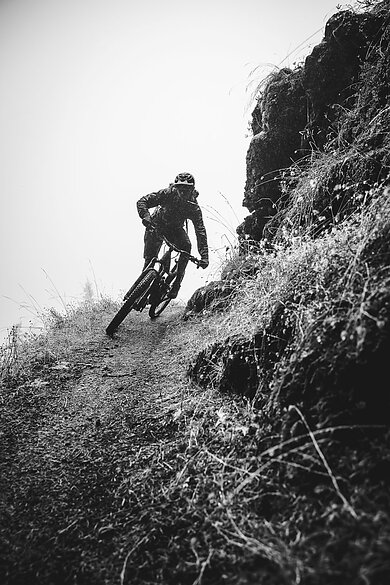
By 2010, a shift in riding style to shorter, more downhill-focused technical trails was gaining ground. The enduro racing format had taken root, and the Oregon Enduro Series came to Oakridge. The impact of this event would reverberate for years to come, as the demand for shorter, faster and more technical terrain began to rise along with the number of gravity-oriented riders visiting the area. The era of the long cross-country “escape” was waning. But one element that remained was the hunger for bona fide adventure and the feel of the backcountry experience.
The next decade brought many new challenges to Oakridge. The 2009 economic recession stifled the growing-but-competitive tourism industry, and businesses began shuttering. Signature events such as the Cascade Cream Puff and Fat 55 endurance races incurred major dips in attendance, as did the Mountain Bike Oregon festival. These eventually transitioned ownership and format to accommodate changing rider demographics.
At the same time, increased access to trail beta and mapping technologies made it easy for riders to plan ahead, minimizing the need for them to visit town for information and resources. Wildfires became more prevalent during the peak riding season and, in 2019, Oakridge residents found themselves cut off from the world when record snowstorms and flooding ravaged the community. This significantly impacted the town’s emergency infrastructure, as well as the distribution of volunteer resources. Many commercial properties changed hands—most notably, the pub, which is now known as the Three-Legged Crane Pub & Brewhouse.
Volunteer burnout was rampant. Derrick Bell, a 25-year local trail veteran, claims this was inevitable.
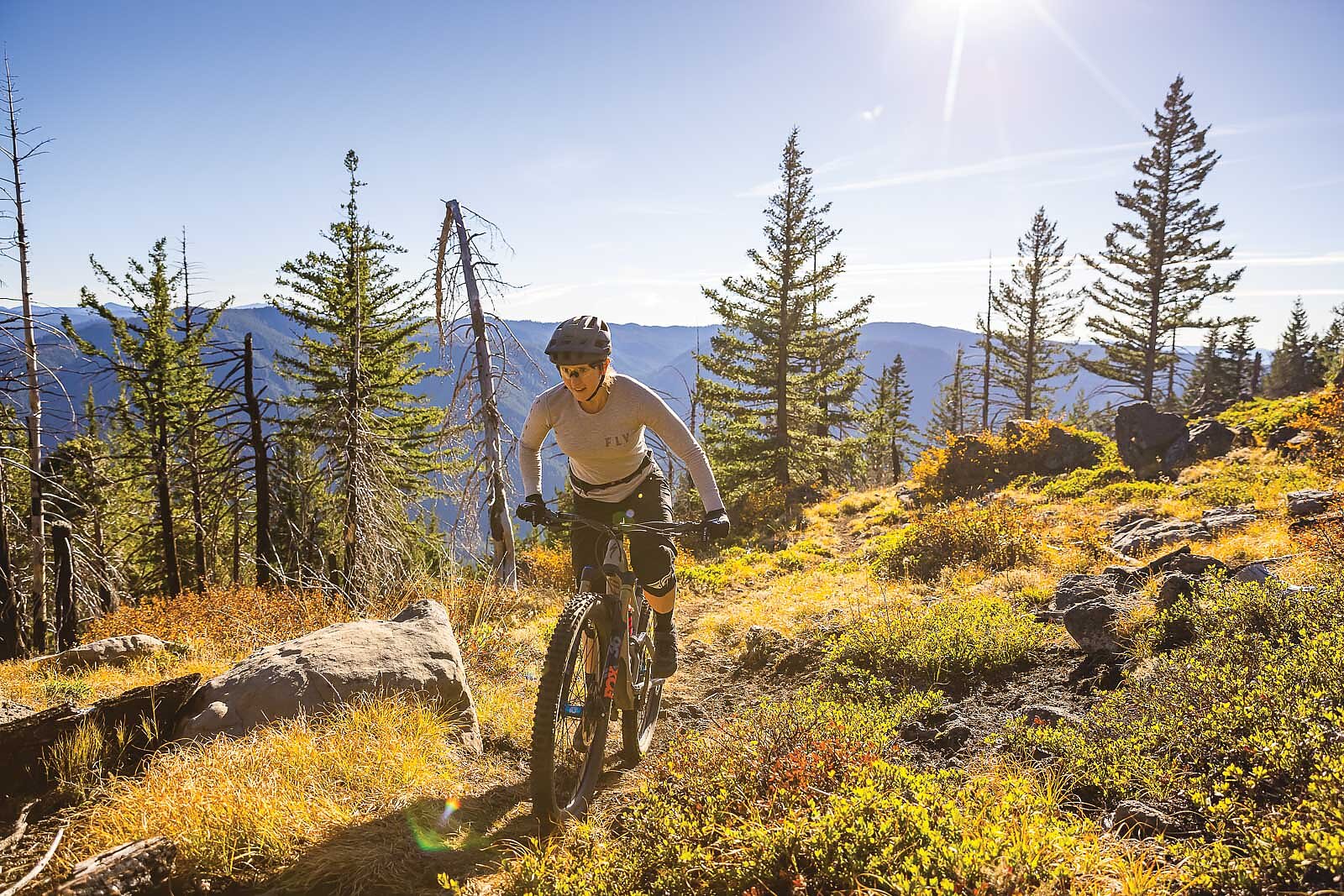
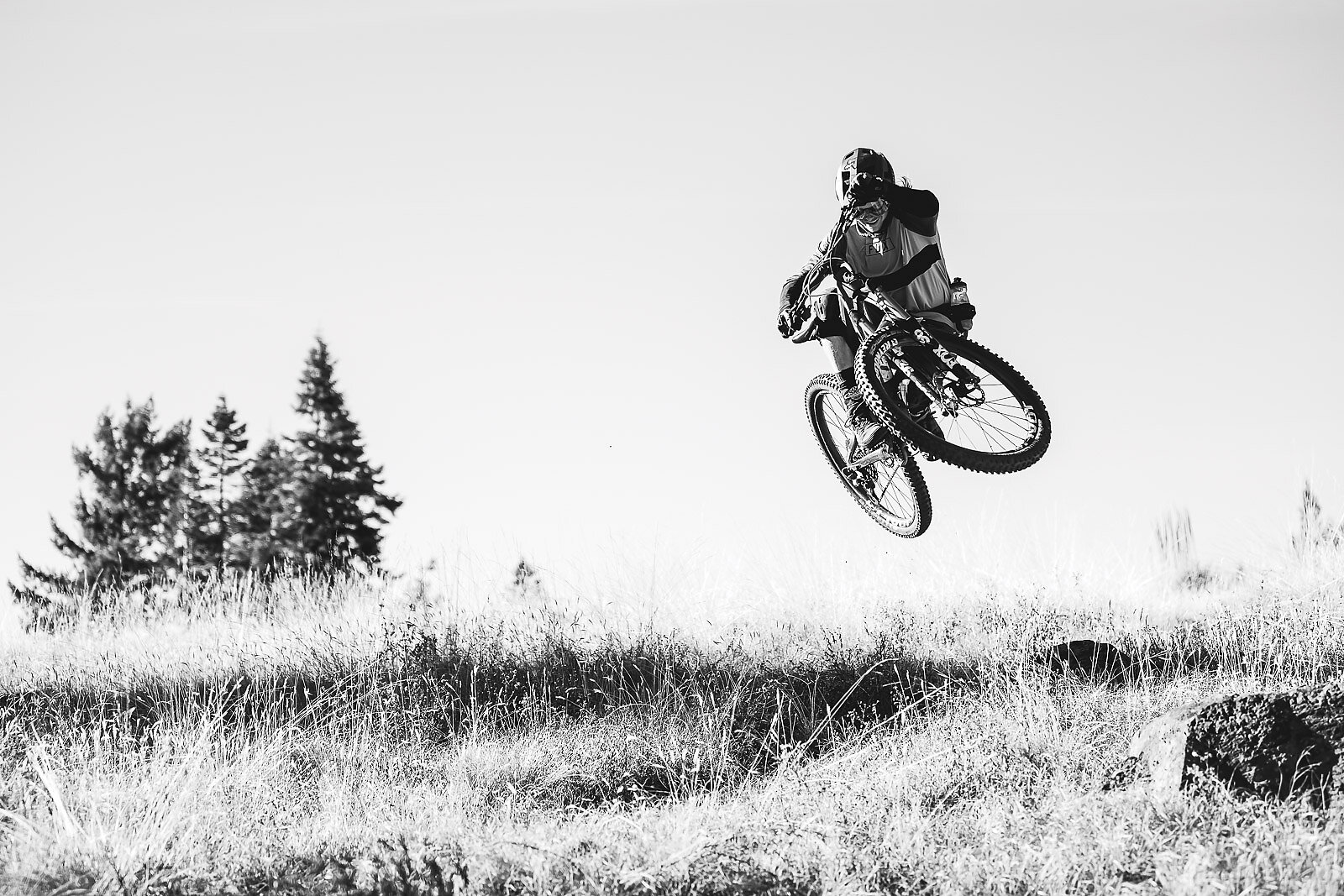
“Every year, there was an exponential increase in people coming to the area to ride trails,” Bell explains. “It was an ongoing frustration to fulfill increasing trail-maintenance needs. Without growing the capacity to meet this impact, volunteers were simply unable to keep up.”
Trail organizations began branching off, working in more defined territories under smaller, nimbler sub-groups such as the Cascade Volunteers Scorpions, who primarily focused on the high-country trails. Meanwhile, the Disciples of Dirt group was tasked with upkeep of the Hardesty Complex, a network situated almost halfway between the towns of Oakridge and Eugene. The GOATS continued to focus on town-to-forest connections, but this left a maintenance gap in the Westfir area.
In 2018, Bell co-founded the Alpine Trail Crew Association, largely focusing on the Alpine and North Fork trail systems. In partnership with the Forest Service and local policymakers, ATCA recently began work on the Middle Fork Willamette 20-Year Trails Plan, which emphasizes a holistic approach to sustainable recreation by all user groups.
Additionally, a new partnership between the Willamette National Forest and Cascade Volunteers—a forest stewardship nonprofit—is bringing more funding, coordination and training to the scene, opening the door for further streamlined operations and a wider breadth of new recruits.
“BY AND FAR, IT HAS THE BEST TRAIL NETWORKS IN THE PACIFIC NORTHWEST. IT FEELS REMOTE, BUT NOT SO FAR AWAY FROM AMENITIES, WITH IMMEDIATE ACCESS TO TRAILS FROM THE FRONT COUNTRY.” —Nick Gibson

Amid such growing community volunteerism, many business owners are embracing the “no dig, no ride” culture, acknowledging that growing a successful tourism-based business means being involved in nurturing and supporting the trails that allow them to live and play in Oakridge.
Cog Wild Mountain Bike Tours, originally a Bend-based company owned by Lev Stryker, opened a new satellite at the Mercantile which quickly grew into its own standalone location. And then came the rise of Trans-Cascadia, a consistently sold-out, multi-day stage race that draws elite athletes from all over the world to sample some of the Pacific Northwest’s most beloved trails, including those of Oakridge.
“We knew the [Oakridge] trail system was vast and relatively well-maintained, with strong trails advocacy leadership and volunteer participation,” says Nick Gibson, the mastermind behind Trans-Cascadia. “By and far, it has the best trail networks in the Pacific Northwest. It feels remote, but not so far away from amenities, with immediate access to trails from the front country.”
In a testament to Gibson’s confidence in Oakridge’s potential, he recently opened the Log Scale Shack Café and a new headquarters for daily mountain bike shuttles and guided tours.

But while Oakridge’s accessible backcountry gems remain a unique draw, a shortage of beginner to intermediate-level trails still remains. In an effort to address this, Mountain Bike Oregon’s director, Daniella Crowder, now offers skills clinics and activities focused on women, youth and family as part of the festival. She is also planning to establish a youth racing chapter in Oakridge, which would bring the need for more “green and lower blue trails” to the forefront.
To this end, trail advocates are pressing the Forest Service to begin working on the much-anticipated Larison Ridge expansion, which would use a modern flow trail design to create trails for adaptive use, climbing and skills progression.
Further exemplifying Oakridge’s broad appeal, it was recently made the hub of the Willamette Tier of the Oregon Timber Trail bikepacking route—which traverses 669 miles of mountain bike trails across Oregon.
“It would have been really easy to skip from the Fremont area to the Deschutes,” says Gabriel Amadeus Tiller, executive director of the Oregon Timber Trail Alliance (OTTA) and founder of the trail’s concept. “But doing that would miss the type of riding that defines Oregon not found in too many other places.”
With all this attention being focused on Oakridge, continued growth seems to be a foregone conclusion. And while such growth spurts have at times led to volunteer burnout, many now believe the lessons of the past have prepared them for the future.
“Growth is inevitable,” Stryker says. “But sustainable growth happens when we embrace this inevitability and provide more access and diverse experiences for more people to fall in love—and give back.”
Enjoy what you just read? Consider joining or donating to the advocacy groups and trail builders that make these areas possible.

